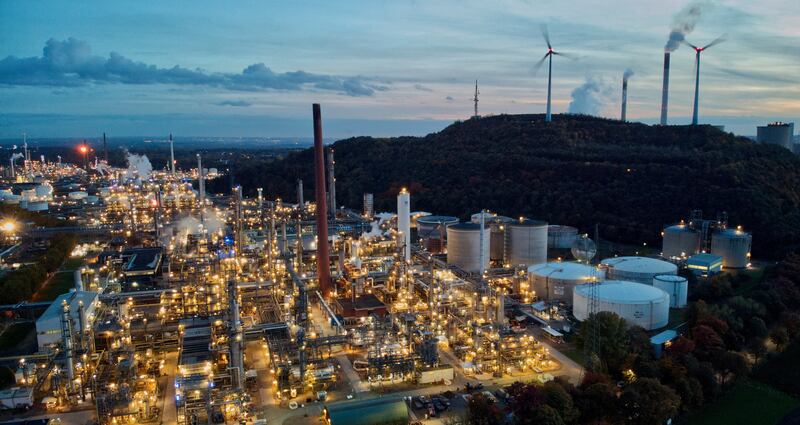The impact of the climate crisis has been felt keenly this year all over the world, from Madrid to Manila. But inside the London headquarters of Standard Chartered, it might be another decade before the reality of a warming planet registers – at least when it comes to certain loans extended by the financial institution.
That is the time frame in which losses from loans made to high-carbon industries – the ones most responsible for global warming – may become financially material for the bank.
Michael Newby-Fraser, Standard Chartered’s head of carbon accounting and net-zero delivery, said climate risks, both those arising from physical events and from the transition to a low-carbon economy, will not hit the bank’s loans until 2030 to 2035.
The analysis is based on the bank’s assessment of expected credit losses, when considering the financial impacts of 1.5°C climate scenarios from the International Energy Agency and the Network for Greening the Financial System.
There is a possibility that larger losses may materialise sooner, but 2030 is likely to be the “inflection point”, Mr Newby-Fraser said.
In its 2022 annual report published earlier this year, Standard Chartered disclosed expected credit losses from high-carbon sectors in its lending book.
The rare disclosure was revealing. For the eight sectors where emissions are highest – including oil and gas, coal mining, shipping and aviation – the bank disclosed possible credit losses totalling $603 million for the first nine months of last year. The forecast is based on creditworthiness measurements such as the probability of default.
The bank did consider potential climate-related impacts – Mr but Newby-Fraser explained that their impact was so small that the bank had decided against including that information in the final analysis.
That is because Standard Chartered’s auditor determined the materiality threshold for the company in 2022 was $210 million, or 0.4 per cent of the bank’s equity. Any exposures less than that were considered immaterial. And when it came to the climate crisis, it did not make the cut.
You read that right: in 2022, when London temperatures topped 40°C for the first time and one third of Pakistan was submerged in flood waters, climate risks were financially irrelevant for the bank.
That said, Standard Chartered wrote in its annual report that it considers climate change “one of the greatest challenges facing the world today” and that “its impact will hit hardest in the markets where we operate, namely Asia, the Middle East and Africa”.
It also reaffirmed its promise to eliminate financed emissions by 2050 and to fulfil its pledge to decarbonise its lending to high-carbon industries by 2030.
But the key takeaway from the bank’s analysis is that the full weight of climate change has not yet fed through to its balance sheet. Or, as the bank said in its report, while it considers climate change to be “qualitatively material”, it is not yet “quantitatively material”.
Check out these new solutions to the climate crisis

A key reason for this dynamic is that the fossil-fuel industry is currently a gold mine. Elevated energy prices have led to higher revenue for companies in high-carbon, heavily polluting sectors, meaning most have no short-term problems servicing their debt.
In fact, while the eight carbon-heavy sectors accounted for 14.4 per cent of Standard Chartered’s loan balances last year, they only comprised roughly 11 per cent of the bank’s credit losses.
And since more than 70 per cent of the bank’s loans to these sectors come due in five years or less, the money will likely have been repaid before climate risks begin to undermine companies’ creditworthiness, Mr Newby-Fraser said.
“We see the transition risks facing these sectors to be mostly outside of the contractual cash flows,” he said. “Two focus areas for NGOs are understandably coal and oil, but from a cash-flow perspective, the credit risk of those industries are generally low in the short term.”
Mr Newby-Fraser acknowledged however that, when more consumers move away from fossil fuels, and more legislation restricts their use, that may lessen “their appeal and the ability for these companies to produce revenues and pay our loans”.
And timing is everything. HSBC Holdings Plc, in its annual report published earlier this year, reviewed how different potential climate pathways may affect credit losses for its customers and portfolios.
HSBC said the transition to net zero “requires fundamental shifts in our customers’ business models and significant investments”, which “will have an impact on profitability, leading to higher credit risk”.
A delayed transition, HSBC said, “will be even more disruptive due to lower levels of innovation that limits the ability to decarbonise effectively, and rising carbon prices that squeeze profit margins”.






